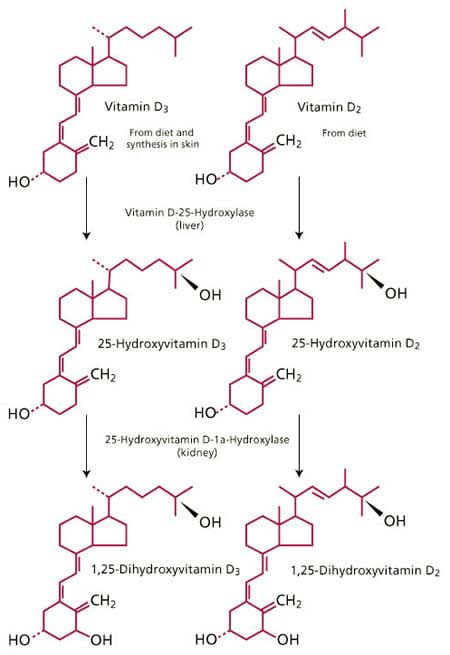Walking out into the daylight we sometimes complain about the sun’s rays hit our eyes or burning our skin. Most people overlook the importance of the sun, for they are unaware of its benefits. Vitamin D is a natural resource produced from the ultraviolet light waves from the sun hitting our skin. As a result, this allows normal bone growth and development to take place. In addition, vitamin D can be found in various foods, such as seafood and milk. Also, vitamin D’s main function is to maintain consistent levels of calcium and phosphorus.
What are the major sources of vitamin D?
The major sources are food and exposure to sunlight. Important food sources are:
- Fortified foods with major dietary sources of vitamins and minerals. For example, Milk in the United States is reinforced with 10 micrograms (400 IU) of vitamin D per quart.
- Fatty fish and fish oils.
Exposure to sunlight is an important source of vitamin D as well. Ultraviolet (UV) rays from sunlight generate vitamin D composition in the skin. There is some evidence that the body can make 10,000 iu to 25,000 iu in a single short sun exposure if the sunlight is adequate and appropriate amount of skin is exposed.
What is Vitamin D’s function? Calcium and phosphorus are two vital minerals which are constantly controlled and conserved by vitamin D in our bodies. Calcium is responsible for managing our body’s bones and keeping them stable. In addition to keeping our bones healthy, phosphorus assists with keeping nerves and muscles working together efficiently. In many countries, such as Alaska where sunlight is scarce, many people develop skeletal deformities, or muscular vulnerability. Without vitamin D, bones can become brittle and soft, also known as rickets.
Lack of Vitamin D Minimal amount or deficiencies are major causes of rickets and osteomalacia. An absence of vitamin D develops when dietary intake is insufficient, little exposure to sunlight, the kidneys not modifying it to its active form, or when the individual isn’t capable of absorbing vitamin D from the gastrointestinal tract. In addition, Americans over the age of 50 may be at risk of deficiency because the ability of skin to manipulate vitamin D into its active form slows as we grow older. As a result of various diseases the reduction of a person’s ability to absorb dietary fat decreases. Also, the kidneys which convert vitamin D to its malleable form decrease in efficiency as well. This is a brief over view of the many functions and uses of this important vitamin. Over the last few years there has been a wealth of information that has been published.
Excess Vitamin D Too much vitamin D can cause nausea, vomiting, poor appetite, constipation, weakness in fatigue, pain in the bones and weight loss. Also, vitamin D stimulates the formation of kidney stones, stiffening of soft tissue, and rise in blood levels of calcium. It is however realize that being that vitamin D is a fat soluble vitamin, it is very hard, if not impossible to get excessive amount of calcium after Duodenal switch operation. In order to avoid this very rare complication, patients on Vitamin D supplements should have their Vitamin D 25-OH levels check regularly.
Difference between D2 and D3 Vitamin D is present in two forms, cholecalciferol (D3) and Ergocalciferol (D2). D2 is manufactured by plants or fungus. D3 is formed by the body as a result of sunlight exposure and to some degree by animal products. Other differences about them is that D3 has a longer shelf life, and D2 can be toxic in most patient at high doses. Most of the beneficial effects of the Vitamin D have been contributed to D3. Further discussion here.
- Cheers! Alcohol Metabolism December 17, 2024
- Vitamin Toxicity December 17, 2024
- Too Much Protein & Protein Metabolism December 17, 2024
- Digestive Juices December 16, 2024
- A patient story: Lap Band complication and Wegovy October 24, 2024


Leave a Reply